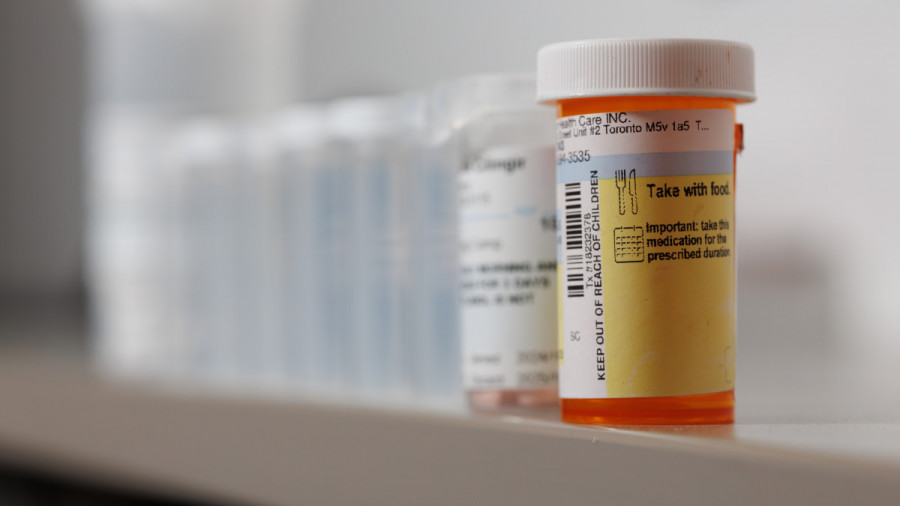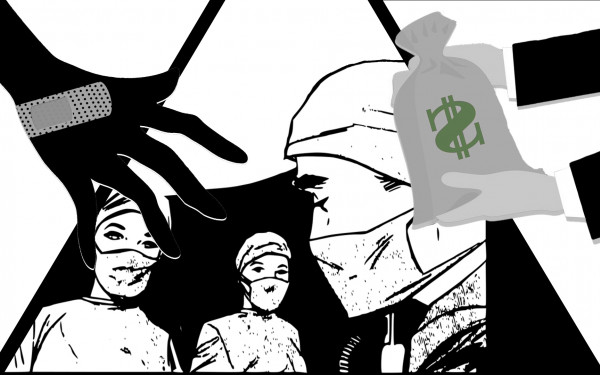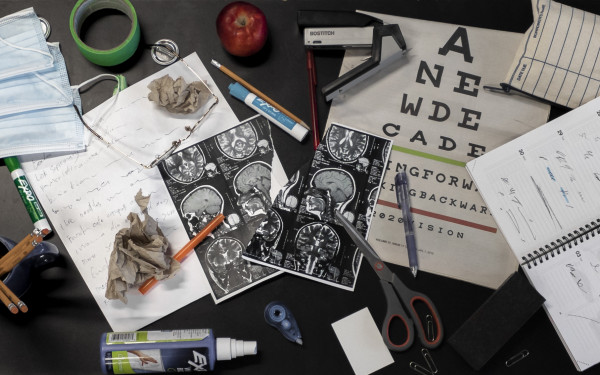Quebec is deficient in diagnoses
Updating iron reference ranges could improve women’s health, but some Quebec laboratories are lagging behind
In the summer of 2023, Sarah Al Ani, a special education teacher in Montreal, began experiencing near-constant fatigue.
With school out of session for the season, she wasn’t working and there was nothing she could point to as the source of her exhaustion.
It was clear that something was wrong.
She’d started having trouble getting up in the morning, had lost the motivation to cook for herself and was often lightheaded. She felt like everything she did was in slow motion, finding it difficult to begin tasks and stay focused on them.
These symptoms remained as the school year began, leaving Al Ani so tired that some days she was unable to go to work, instead spending hours in bed badgering herself to just get up.
“I was upset with myself, I knew I was capable. Why don't I go eat something?” she says. “It was like an internal battle with myself.”
She sought help at the McGill University Health Center (MUHC) in Montreal. She was told that because of a shortage of family physicians and the low urgency of her concern, she would have to wait several months to see a doctor.
Months later in Qatar, where she holds residency, Al Ani discovered she was iron deficient. In Quebec, she might not have received the same diagnosis.
Iron levels in the body are assessed by measuring ferritin, a protein that stores iron. Low ferritin levels indicate insufficient iron stores. Without enough iron, cells struggle to produce energy, which can reduce organ function, particularly impacting the heart and skeletal muscles. If iron levels fall too low, the body can no longer produce a healthy amount of red blood cells, leading to oxygen shortages throughout the body.
Unlike some Canadian provinces, such as Ontario—where ferritin minimums were recently increased and standardized across the province so that levels below 30 micrograms per litre (ug/L) now indicate an iron deficiency—Quebec’s thresholds vary widely by testing site. This means that each laboratory in the province decides what level of ferritin indicates a deficiency.
Some labs in Quebec, including the large private laboratory Dynacare, have updated their limits to be in line with Ontario’s. However, many remain with significantly lower minimum normal levels.
For example, at the MUHC, women’s iron levels are not flagged as abnormal until ferritin levels dip below 10 ug/L. At another Montreal hospital, Santa Cabrini, an 11 ug/L cutoff is used.
Notably, in Ontario, male and female patients are diagnosed with iron deficiency when their levels fall below the same minimum value. In many Quebec laboratories, women’s iron levels must fall substantially lower than men’s for an iron deficiency to be indicated.
Dr. Grace Tang, a hematology researcher at the University of Toronto, says there is enough scientific evidence to support diagnosing and treating iron deficiencies in women when ferritin values fall below 30 ug/L. Working alongside hematologist and Hemequity founder Dr. Michelle Sholzberg and other researchers, Tang spent over four years advocating for this change across Ontario, with the team achieving success in September 2024.
She says that prior to the update, many laboratories in the province were basing their ferritin minimums on outdated World Health Organization recommendations from flawed studies conducted over 40 years ago.
“I would propose that the World Health Organization is kind of mysterious,” Tang says. “They just tell you the cutoff. They don't tell you the data that was behind it.”
She says that the guidelines have not been revisited because iron deficiency in women is widely normalized.
“It's so common that no one really is looking into it because it's just everywhere or people don't believe in women and their symptoms,” Tang says. “They don't believe women are having heavy menstrual periods because they don't know how to ask about heavy menstrual periods.”
Some women have turned to social media to tackle iron deficiency on their own. The Iron Protocol, a Facebook group with over 150,000 members, promotes high-dose iron supplementation for women experiencing symptoms they attribute to iron deficiencies—not all members have formal diagnoses. Posts in the group range from advice on dosages and formulations to tips on minimizing side effects, as well as personal stories about feeling overlooked and dismissed by healthcare providers.
While support from others experiencing iron deficiency can be important, doctors maintain that iron supplementation should be done under the supervision of a medical professional.
Dr. Mathieu Hanna, a family physician in Montreal, says that iron deficiency is not the only reason for a patient to experience fatigue. He says it is important to first investigate other likely causes, especially when the patient doesn't present with other hallmark symptoms of iron deficiency, such as paleness and shortness of breath.
"If in a month or two, she's still tired and she has treated her depression, anxiety, I'm going to test it,” Hanna says. “We don't have to test everybody.”
But some researchers disagree with this practice. Dr. Cory Dugan, a nutrition science researcher at the University of Western Australia, says iron deficiency is often misdiagnosed as anxiety or depression, especially in women. He wants to see doctors consider all possible causes for women’s fatigue, rather than quickly attributing it to mood disorders.
For Al Ani, she says she is glad she made the trip to Qatar to get to the bottom of her fatigue.
In addition to finding out about her iron deficiency, she learned that it was being caused by underlying endometriosis, a condition where uterine tissue grows outside of the uterus, which can cause pain and reduce fertility. The endometriosis had resulted in a 16 cm cyst on one of her ovaries, which had triggered heavy menstrual bleeding, leading to depleted iron stores.
In Qatar, her treatment was swift; within a month she had had surgery to remove the cyst. She was advised to eat iron-rich foods and to take an iron supplement. In a few months, her energy levels returned to normal. She doesn't think that she would have gotten the same care in Quebec.
When Al Ani’s ferritin was tested in Qatar, it was 15.4 mg/L, an amount that would have been too high to be flagged as abnormal in test results from the MUHC where she sought care.
“When you're dealing with a broken system, you're just getting more hopeless and then you start to disregard your health,” Al Ani says. “And so then you're going to get something that's going to escalate. I think that's the issue.”
This article originally appeared in Volume 45, Issue 7, published January 14, 2025.


_600_832_s.png)




